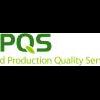Hi,
I've been with my Company for almost a year as a QC technician now, and throughout this one year we often have issues with coliform / E. coli problems with our pepper...
I'm not the one handling the grd pepper production, so I don't really know the details. But what I know is this:
The raw whole peppers will be steam sterilized under moist heat at 130 - 140 deg C for less than 5 mins, after which they are further heat dried at 150 - 160 deg C for 20 - 25 mins. E. coli having a optimum temperature of 37 deg C should not be able to survive under this condition. After sterlization, samples will be drawn and sent to the microbiology lab for testing. Both coliform / E. coli came back negative.
Without a cooling system, our sterilized whole pepper were stacked and stored while waiting for the micro results.
Once we have confirmation that the pathogens are not there, we will proceed to grind it for the customers (No heat invovled). Operators sanitized their hands with suitable alcohol and wore gloves before handling the goods.
Here comes the problem. After grinding, we will draw another set of samples for micro testing again. However, this time round, they came back positive.
How is that possible, especially since the steam-sterilized whole pepper came back negative? Are we missing out something here that might cause the sterilized whole pepper to get contamined?
Hope someone here has experience with microbiology issues...
-HY
- Home
- Sponsors
- Forums
- Members ˅
- Resources ˅
- Files
- FAQ ˅
- Jobs
-
Webinars ˅
- Upcoming Food Safety Fridays
- Recorded Food Safety Fridays
- Upcoming Hot Topics from Sponsors
- Recorded Hot Topics from Sponsors
- Food Safety Live 2013
- Food Safety Live 2014
- Food Safety Live 2015
- Food Safety Live 2016
- Food Safety Live 2017
- Food Safety Live 2018
- Food Safety Live 2019
- Food Safety Live 2020
- Food Safety Live 2021
- Training ˅
- Links
- Store ˅
- More


















